Have you noticed any signs of a clogged or damaged drainage system in your home or commercial property? Slow draining sinks, foul odors, or water backing up are all common signs of potential issues with your pipes. If left unaddressed, these problems can lead to costly repairs and inconvenience for you and your family or tenants.
One popular solution for repairing damaged pipes is drain lining. This process involves inserting a liner coated with resin into the existing pipe and then inflating it to create a new pipe within the old one. This method can be a cost-effective and efficient way to repair damaged pipes without the need for expensive excavation work.
But before you decide to invest in drain lining, it’s important to consider the true value of this solution. Is it worth the investment, or are there other options that could provide a better return on your investment?
To determine the true value of drain lining, consider the following factors:
1. Cost of Drain Lining vs. Traditional Pipe Repair
One of the main advantages of drain lining is its cost-effectiveness compared to traditional pipe repair methods. Excavating and replacing damaged pipes can be a time-consuming and expensive process, requiring heavy machinery and skilled labor. In contrast, drain lining can often be completed in a fraction of the time and at a lower cost.
When calculating the true value of drain lining, consider the upfront cost of the repair as well as any potential savings in labor and materials. While drain lining may have a higher initial cost than simple patch repairs, it can provide long-term savings by preventing further damage and the need for future repairs.
2. Time and Disruption
Another important factor to consider when evaluating the value of drain lining is the time and disruption caused by the repair process. Traditional pipe repair methods often require digging up large sections of your property, causing damage to landscaping, driveways, and other structures.
In contrast, drain lining is a minimally invasive process that can be completed quickly and with minimal disruption to your home or business. This means less downtime for you and your family or tenants, as well as fewer headaches associated with the repair process.
3. Longevity and Durability
When investing in any home improvement project, it’s important to consider the longevity and durability of the solution. Drain lining is known for its durability and longevity, with many liners lasting up to 50 years or more. This can provide peace of mind knowing that your pipes are protected for the long term.
By contrast, traditional pipe repair methods may require regular maintenance and repairs to keep your pipes in good working order. This can add up over time, making drain lining a more cost-effective and durable solution in the long run.
4. Environmental Impact
In today’s environmentally conscious world, it’s important to consider the impact of your home improvement projects on the environment. Drain lining is a green solution that reduces the need for excavation and the disposal of old pipes, minimizing your carbon footprint and reducing waste.
By choosing drain lining over traditional pipe repair methods, you can feel good knowing that you are making a sustainable choice for your home or business.
In conclusion, calculating the true value of drain lining involves considering a variety of factors, including cost, time, durability, and environmental impact. While drain lining may have a higher upfront cost than traditional pipe repair methods, it can provide significant long-term savings and benefits. By weighing these factors and consulting with a reputable plumbing professional, you can determine whether drain lining is the right investment for your property.



